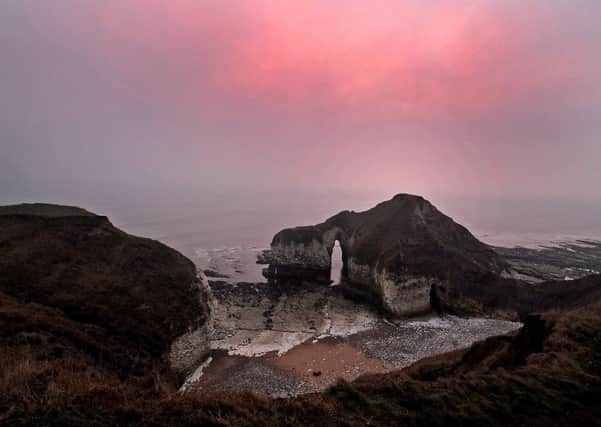This stretch of Yorkshire coastline has a likeness with a dinosaur


With the archway providing a break in the rockface, the remaining shape bares a subtle resemblance to one of the creatures of the prehistoric world craning its neck to drink from the sea.
Perhaps unsurprisingly, given its quirky characteristics, it has been the subject of many a photograph. This one, taken at first light, illuminates its calm ocean backdrop with a red haze, creating a somewhat appropriate air of mystery around what is visualised as an extinct beast.
Advertisement
Hide AdAdvertisement
Hide AdThe rather remarkable formation is one of the many highlights of Flamborough’s dramatic coastline, with its rugged and windswept distinctive white cliffs, as well as coves, sea caves and stacks, which together attract a large bird population.
According to the Yorkshire Wildlife Trust, Flamborough Head has one of the most important seabird colonies in Europe, with tens of thousands of breeding auks, gannets, gulls and puffins packing into the cliffs in the summertime.
Two lighthouses also form part of Flamborough’s picturesque offering. The first, now a Grade II-Listed building, was created in 1669 but is believed to never have been lit. The second dates back to 1806 and marks Flamborough Head for vessels heading to nearby Scarborough or Bridlington.
Advertisement
Hide AdAdvertisement
Hide AdThe cliff tops, well trodden by walkers, provide breathtaking panoramic views, and back in 2005, Flamborough Head, in all its glory, featured on BBC Two show Seven Natural Wonders.
In the Yorkshire and Lincolnshire episode, weather presenter Paul Hudson explored some of the region’s natural phenomenons including the headland’s chalk cliffs, reportedly 400 feet high.
Archived web pages from the time of the show suggest that the chalk was laid down millions of years ago when the last dinosaurs were roaming the earth. Perhaps then, the ‘drinking dinosaur rock’ is a rather fitting result of erosion?
Technical details: Nikon D3s with 12-24mm lens and exposure of 50th at f5.6, 800 ISO.